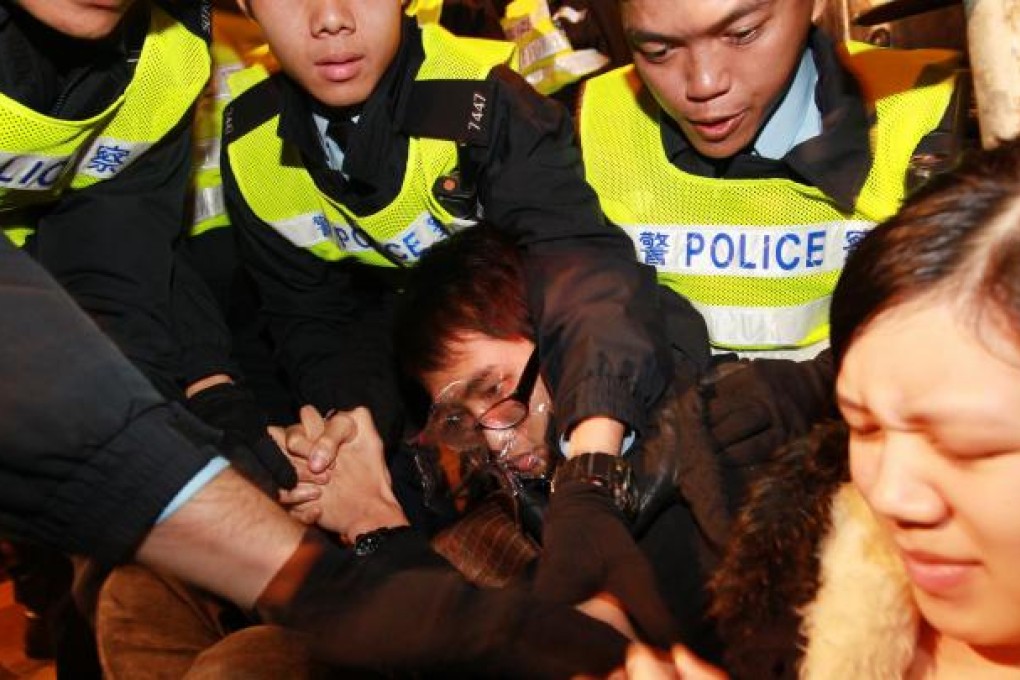Protesters say Public Order Ordinance restricts their rights
Protesters say the rules governing demonstrations stifle their rights by giving the long arm of the law way too much discretionary power

Police haul away yet another protester from another demonstration, ready to charge him or her with public order offences. This is Hong Kong now, but that long arm of the law stretches right back to the eve of the handover.
"At that time, the Chinese government was very worried about the social order during the transition period," says Benny Tai Yiu-ting, associate professor with University of Hong Kong's department of law.
He believes Beijing gave then-chief executive-elect Tung Chee-wah a political mission: to push for the tightening of the Public Order Ordinance.
"Beijing was worried that the amended Public Order Ordinance in the colonial era was not enough to maintain social order. So they wanted to tighten it," Tai said.
The ordinance, which regulates public meetings and processions, was first enacted in 1967 to crack down on the leftist riots against British colonial rule. It outlawed any gatherings of three or more people without police permission.
The ordinance has undergone several changes over the years.
In 1995 it became much more liberal following the enactment of the Bill of Rights Ordinance, based on the United Nations' International Covenant on Civil and Political Rights.